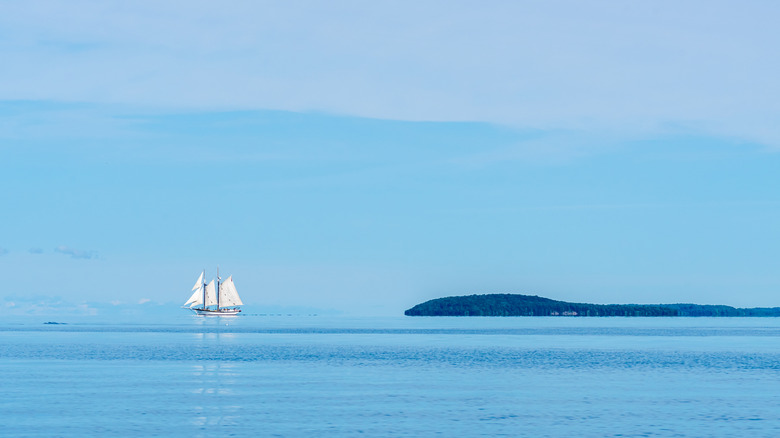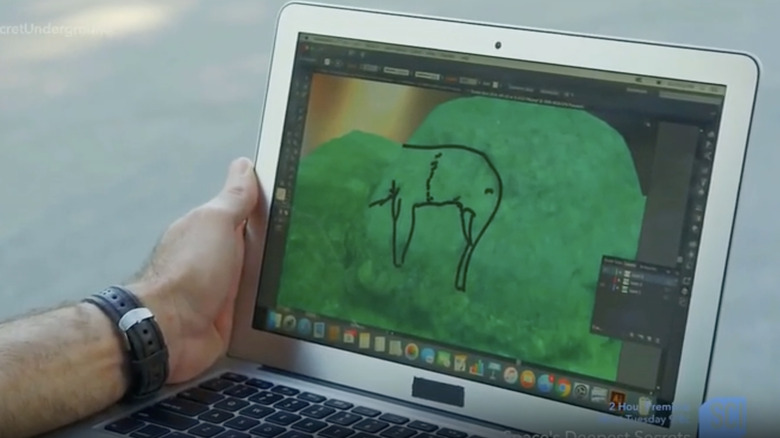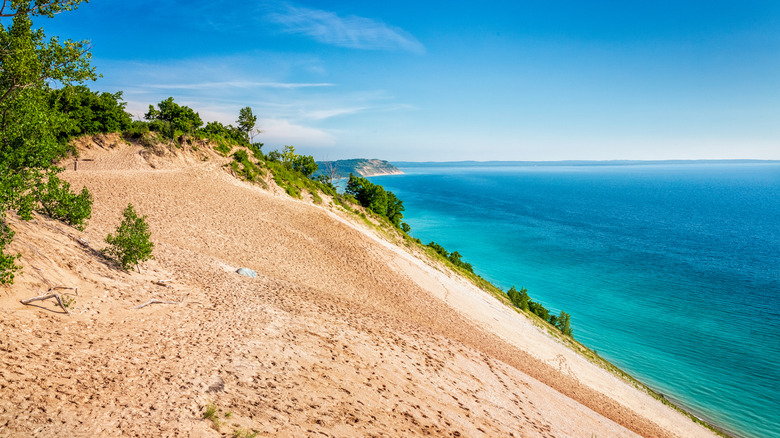Hidden In The Depths Of Lake Michigan Lies A Fascinating Landmark Hailed As 'Michigan's Stonehenge'
The Earth can still surprise you. That's because almost 60% of it remains unexplored, thanks to the vast oceans that cover the globe. Dip beneath the surface, and another world unfolds, often with discoveries that rewrite "history." That's what happened in Grand Traverse Bay at the north end of Lake Michigan in 2007, when Dr. Mark Holley, a professor at Northwestern Michigan College and chief archaeologist of Grand Traverse Bay Underwater Preserve, discovered a submerged "Stonehenge," 40 feet down. There, a number of large stones — some weighing up to 3,000 pounds — form a hexagon at the end of a quarter-mile line of other rocks. Even more remarkable is that one has what looks to many like an etching of a mastodon. Nevertheless, the stones' meaning and function remain a mystery.
One theory is that the stones — determined to be around 9,000 years old — served as a drive line for herding animals —specifically caribou — to slaughter; a similar structure with that purpose and age was found in Lake Huron in 2014. Others contend the stones may have a spiritual element, just like Stonehenge (one of the most disappointing tourist attractions in the world). Whatever the truth, the stones help reveal the ancient coastline from when this area of the bay was still unsubmerged land. It also changes perceptions of the peoples that inhabited it, showing that they had a greater knowledge of their environment and socialization with other tribes than previously assumed. As a sign of respect, Holley first revealed its location to local Ottawa and Chippewa tribes.
Disputes and questions continue
While news articles about the discovery splashed "Stonehenge" in their titles, Holley disputes the moniker. In fact, on his webpage, he writes, "This label has been placed on the site by individuals in the press who may have been attempting to generate sensation about the story and have not visited the site." Instead, he prefers to describe it more as a line of stones over a half-mile long and not a circular megalith in the manner of European henges. There's also some question about whether the mastodon carving is legit or simply a Rorschach-like collection of lines that people are interpreting as the prehistoric animal, echoing like Fox Mulder's "I want to believe" poster in "X-Files." Plus, the rocks are festooned in algae and mussels, making any definitive determinations nearly impossible.
That Holley keeps the location of the site secret for security reasons makes third-party analysis and confirmation a challenge, but he did allow Rob Nelson, host of the documentary series "Secrets of the Underground," to visit the site, albeit wearing blindfolds for part of the way. Nelson analyzed the rock using stereophotogrammetry — technology that creates 3D models from photographs — and then traced the indentations into what looks like a mastodon. Certainly, he seemed to be convinced, declaring, "Unbelievable! A mastodon carving on a rock that hasn't seen daylight in at least 5,000 years."
A treasure among treasures
In addition to these mysterious rocks, Grand Traverse Bay hoards a sizable share of other underwater treasures, especially shipwrecks. In fact, it was while scanning for wreckage that Holley stumbled upon the stones. A major route for maritime trade and transportation going back to the 1800s, the 32-mile-long and 12-mile-wide bay has sunk many ships, which is a boon for scuba divers and snorkelers. Another underwater curiosity is the "junk pile," an area comprised of several small boats, a refrigerator, and a Ford Pinto. All of this makes the bay a great place in Michigan for shipwreck dives.
A good place to start exploring Grand Traverse Bay is Traverse City, located at the south end of the bay just minutes from the local airport. There, right along the water, is Sleeping Bear Dunes National Lakeshore, with 70,000 acres of dunes, forests, and a turquoise-hued coastline. The sleeping bear in the name comes from an Anishinaabe legend. Thanks to the region's grape-friendly microclimate, more than 50 wineries operate in the area, creating an underappreciated wine scene that gives off Italy vibes.
But it's the locally grown cherries that make Traverse City famous. The fruit is the inspiration for the annual, eight-day National Cherry Festival every summer and the local airport's name: Cherry Capital Airport. Another highlight is the Mission Point Lighthouse at the tip of the Old Mission Peninsula. Built in 1870, it now welcomes visitors for historical tours and climbs to the tower.


